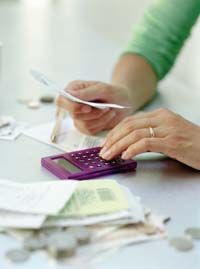If you use coupons, you know that when you reach the check out counter, you hand the cashier your coupon(s). The cashier scans them and puts them into the cash drawer. What happens next depends on the store, but here's a typical process. At the end of the day the coupons in each cash drawer are added up as if they were cash, and that amount is added to the cash sum to be sure the overall total for the drawer is accurate. Then all of the manufacturers' coupons (and any coupons issued by the grocer) are sent in plastic bags or pouches to the store's corporate headquarters, typically once a week.
In the big store chains, the value of the coupons can easily total several million dollars per week. There is a person in headquarters in charge of processing the coupons. That person boxes all of the bags of coupons (still separated by the individual stores from which they came) and ships them to a third-party clearinghouse.
This is where the real work starts. The clearinghouse has to sort through millions of coupons, largely by hand. The first goal is to separate the coupons by manufacturer. Another goal is to separate coupons with scannable UPC codes from damaged (torn, smudged, etc.) coupons. This is so much hand work that some clearinghouses pay other clearinghouses -- in Mexico, for example -- to do part of the work. One system places scannable coupons face up on a conveyor belt, where they are moved along under a scanner that reads the UPC codes and tallies the amounts, then adds up the total value of each manufacturers' coupons. Damaged coupons that can't be scanned have to be sorted by hand and added up separately. The other system is to do the whole thing by hand. The clearinghouse then sends all the sorted coupons with an invoice to the manufacturer.
Several things can happen here. The manufacturer might reimburse the clearinghouse for the amount of the invoice, and the clearinghouse will send a check to the store for the amount of the coupons. Or the manufacturer will send a check directly to the store and the store then pays the clearinghouse. The clearinghouse is paid a certain amount per coupon by the store, plus shipping and handling. The whole cycle takes about a month. In many cases, the manufacturer will recount the coupons to avoid fraud -- a process that may send the coupons through another clearinghouse!
This is another great example of how a simple idea -- "let's give people a little scrap of paper that they can redeem for 25 cents off a can of beans" -- turns into a whole lot of work for somebody!

